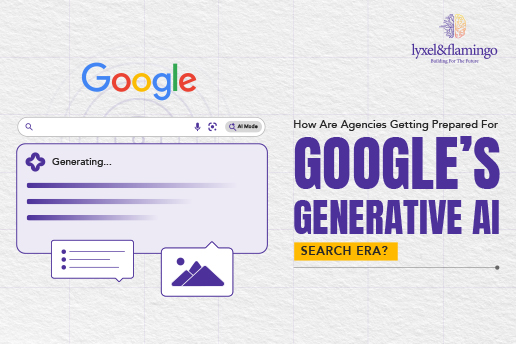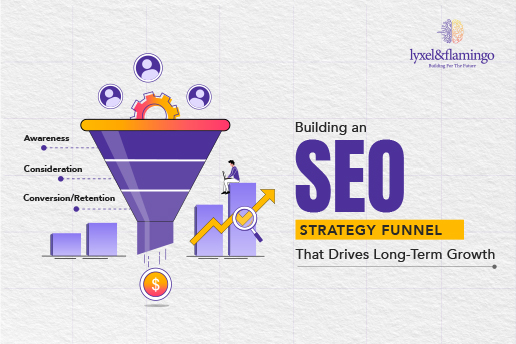Changing the domain might seem like a frightening job, but at times, such an initiative will be of utmost importance. For instance, if your business is about to change its brand name, maintaining consistency in your branding approaches is of utmost importance. Running your business on a specific domain URL but a changed brand name won’t seem suitable for the brand value.
If not, then some businesses just want to switch their branding approaches upon using a shorter domain name. Irrespective of why you need to make this move, there’s a prime consideration on whether it would affect your current SEO rankings.
Now, this is something horrifying for business owners to sacrifice their current rankings in order to meet the necessity of a domain change. But, with rightful considerations and paying necessary attention to details, you can implement this change without imposing long-lasting damage to your SEO.
So, if you have plans to migrate your domain to a new name but don’t want to start off with your SEO from scratch, you are on the right page. This article will help you with ways and tips on how to migrate your domain without adversely affecting the SEO rankings.
What is a Domain Change Initiative for Brands?
As stated earlier, there can be numerous reasons to change your brand domains. Suppose you come across a more user-friendly domain name, have changed your brand name, want consolidation of multiple domain names as one, or are tired of your existing domain.
In that case, you might think of changing your domain to a new name. Before you learn how to change it while keeping your SEO alive, here’s some critical definitional understanding you should have about the initiative.
You should know when you seek to replace your current brand domain, all of the linked sub-domains will also be changed. But the other parts of the URL structure will still be the same. All of the custom data analytics views that were created with the use of your current brand domain will be removed from the account when you are done replacing it with a new one.
Domain change and transfer are two different things. But, some fresh entrepreneurs or business owners might get confused with the terminology. Domain transfer is when you change the host and transfer the website to an entirely new server. And domain change is about altering your current website address or URL.
Steps on How You Can Migrate Your Domain Without Losing the SEO Rankings
So, if you have purchased the new domain and are set to configure it to your website, now is the time to take calculated measures toward keeping your SEO juice. Changing the domain name might seem easy by just changing the backend settings and starting to post content alongside the new domain.
But there’s an extensive array of steps you should implement to make sure your SEO achievements survive this transition. Here are the steps for you to seamlessly migrate your domain with SEO parameters intact are:
1. Create a Complete Site Backup
Imagine a situation where you start the migration process to the fresh domain. But suddenly, you get into some technical glitch and find out that the backup you rely on is incomplete or corrupted. Thus, you will be running into a significant problem!
Therefore, changing a domain is considered a significant change! So, whenever you are onto something like that, create a fresh site backup of the database and files. It is the first and most crucial step before advancing to the core implementations.
2. Ensure the New Domain has a Reputation & Relevance
Try and find out if the new domain you own has been previously registered or not! It is to ensure that you are not the company that is about to carry forward the bad reputation of the domain or pay penalties for a poor brand impression.
There are specific tools available online for you to check if there are any issues with the new domain. You can visit the page archive.org to determine the history of a domain on what websites have been displayed over it. If the domain is fresh, that’s a green signal for you to proceed.
But, if you get some results, make sure you take a closer look at them all. Have a keen eye on determining if the websites were spam or were posting poor-quality content through the domain. In case you detect such irrelevance and a bad reputation with the domain, don’t go for it.
It is because your SEO will take a blow as the irritated customers or old-site visitors associated with the domain will trouble your brand.
3. Run the Migration
Once you have the backup and have examined the domain for its cleanliness to accommodate your brand for growth, get along with the migration process. Most SEO professionals will request you move small portions to the new domain. For instance, you can consider migrating one subdomain at a time.
In this way, you will be able to check how the search rankings are being affected; even though it is a practical approach but is very quite time-straining. Therefore, alternatives are preferred.
Suppose you seek supported migration of the content to a new domain; your hosting provider will help you with the necessary process. Some have direct and automated options for you to migrate with just one click, whereas, in some, you might have to implement manual inputs. Check the same with your hosting provider and keep your CMS (Content Management System) in check.
4. Permanent Redirects from the Previous Domain to the New One
When the migration is complete, you must make the ‘301’ permanent redirects, as opposed to ‘302’ temporary redirects. It is one of the critical steps to drive the web traffic of an old domain to your new one. When you are changing your website URL, this is a practical move to maintain the SEO rankings.
The redirects will help Google understand that the content of your website has been migrated to a different domain. Thus, Google will then run index updates accordingly. When you are doing this, make sure you are not just working out on redirecting just the homepage but all of the other pages.
It is because there’s a possibility that some of the websites might have links on their page content that redirects them to your blog post or internal pages. Thus, redirecting all of the web pages on your system will make sure that all of those links bring users to the right web pages of your new domain.
5. Spread the Word of Your Domain Migration to Google
Once you have made the redirects, the search engines will get the indication that your content has moved. But even with that, you should get a great idea of submitting an official notification to Google about the change of domain and website address.
Access the Google Search Console, and access the feature, ‘Change of Address.’ You will then be prompted to add and verify the new domain. If not, you can also submit the dedicated sitemaps over GSC for both old and new domains. Thus, Google will finally be aware of your 301 permanent redirects.
6. Be Persistent with Testing the Site Over New Domain
When you have implemented the domain change, get along with the process of cross-verifying the SEO aspects. While you are running the manual tests, here are some of the things you should consider doing:
- Check if Google Analytics is tracking your site efficiently on your new domain. Keep a weekly check on the report to compare if the overall traffic count is the same with the new domain as that of the old one.
- Find out if your Google Analytics reports any 404 Error or ‘Page Not Found’ pages that the traffic is experiencing.
- Take reviews from friends or followers to catch errors that they caught you might have missed.
You can also use Google Search Console as your effective tool to check the website’s health. If there are any problems, you will get a notification through email to implement immediate change. You can check the index and see the coverage report to determine any errors.
You can get in touch with experts to take advice on monitoring the site performance and SEO checks using various tools.
Conclusion
Once you are done with all of these steps, you will eventually see that the traffic is smoothly being redirected to the new domain. Sooner or later, the target audience will realize that this is the new identity address of your brand and will stick to it. Following these steps, update all of the mentions of the old domain with the new one across social media platforms, business cards, marketing campaigns, etc.
In the end, put up a blog post to inform the website visitors and clients about the change of your website address. Schedule social media posts and prepare email campaigns for the newsletter subscribers, to pass on this message. Thus, you will be ready to gear up your new brand domain without affecting your SEO achievements.









